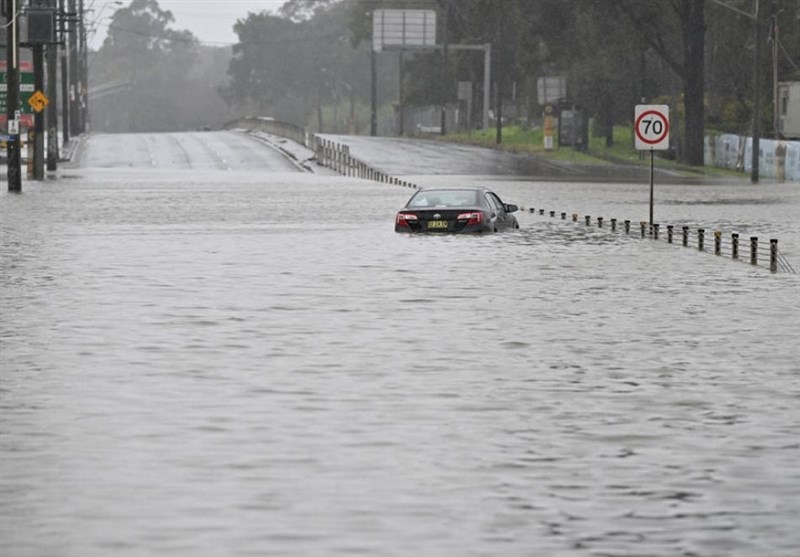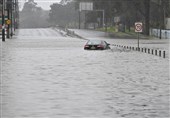Australia Floods Worsen As Thousands More Flee Sydney Homes (+Video)
TEHRAN (Tasnim) – Thousands of people on Australia's east coast fled their homes Wednesday as torrential rains tracked north after unleashing floods in Sydney that submerged communities, roads, and bridges under mud-brown water.
Torrential rains kept battering Australia’s east coast on Tuesday, intensifying the flood crisis in Sydney as thousands more residents were ordered to leave their homes after rivers swiftly rose past danger levels.
About 50,000 residents in New South Wales, most in Sydney’s western suburbs, have been told to either evacuate or warned they might receive evacuation orders, up from Monday’s 30,000, authorities said.
The federal government has declared the floods a natural disaster, helping flood-hit residents receive emergency funding support.
The latest wild storm cell - which brought a year’s worth of rain in three days to some areas - is likely to ease in Sydney from Tuesday as the coastal trough moves north, the Bureau of Meteorology (BoM) said.
But the risk of flooding could remain through the week with most river catchments already near capacity even before the latest deluge. Some regions have received 800mm (31.5 inches) of rain since Saturday, eclipsing Australia’s annual average rainfall of around 500mm (20 inches).
About 90mm (3.5 inches) of rain could fall over six hours in the state’s mid-north coast from Tuesday, reaching up to 125mm (5 inches) in some places, BoM said.
Winds up to 90 km per hour (56 miles per hour) are also forecast in several flood-hit places, raising the risk of falling trees and power lines.
Major flooding is occurring at Windsor in Sydney’s west, its third and most severe flood this year, according to the weather bureau.
Footage on social media showed submerged roads and bridges, while emergency crews rescued stranded people from partially submerged vehicles that became stuck in rising waters.
Federal Treasurer Jim Chalmers warned the economic impact from the floods “will be substantial”.
Floods have likely inundated several food-producing regions and that would hit supplies and lift prices, further straining family budgets already reeling under soaring prices of vegetables and fruits, Chalmers said.
The Reserve Bank of Australia flagged the floods “are also affecting some prices” as it raised its cash rate a hefty 50 basis points on Tuesday and flagged more tightening ahead to tame surging inflation.







